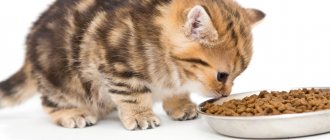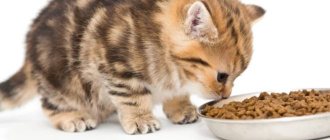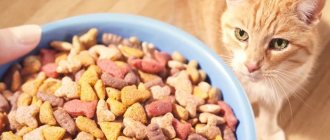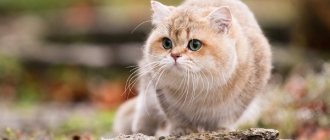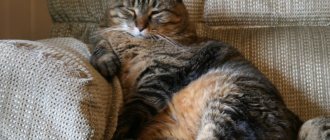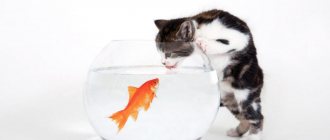Let's face it. There's something special about home-cooked food that no restaurant—no matter how fancy—can replicate. Nothing beats the delicious taste of home-cooked food.
What's worse about our cats? After all, they are part of the family too! But giving your cat leftovers from your plate is not healthy. But making her own dish is not only healthy, but it will also satisfy all your cat’s needs, and there will also be a piece of your love in this food.
And yes, it's much easier than you think. You can make great cat food with simple ingredients you may already have in your kitchen. It's fast, accessible and extremely fun. Why not?
In this article, we'll explain everything you need to know to become a better cat chef, from ingredients to recipes and helpful tips.
Why should you try cooking for your cat?
Besides the obvious pride you'll feel in creating delicious treats for your cat, there are numerous real benefits.
It's more natural. Cats are highly developed predators. A diet made entirely from commercial foods may satisfy their nutritional needs, but will not satisfy their carnivorous instincts.
It's healthier. Kittens have sharp, sharp teeth that were designed for slicing and tearing raw meat. Processed foods do not provide the same health benefits. There are countless benefits of natural foods for your cat's health.
Easier to digest. When your little predator chews your tasty food, a lot of saliva is released, which signals the cat's stomach to prepare important stomach acids, thereby improving digestion.
It's more fun. Once you prepare the recipes we have prepared for you below, you will be able to enjoy watching your cat. And believe me, watching her eat your super dish is a lot of fun.
Easier to control. The fact is that the choice of products and responsibility for the cooking process will be entirely in your hands. This means that nothing unnecessary will get into the cat’s diet. And believe me, it’s much easier than reading the ingredients of ready-made food.
These are just a few reasons to make your own cat food, but you can find many more reasons if you dig deeper into the world of cat cooking.
However, there is one very important question that needs to be answered before you start cooking!
Making your own healthy diet for your cat at home is quite easy.
This way, you don't have to worry about all the harmful additives used in commercial cat food. You can easily make your own homemade cat food that will be tasty, nutritious and healthy. Take these recipes as a basis and experiment.
Remember! Homemade food should provide your cat with all the vitamins and minerals it needs. If you are not sure about this, give additional vitamin and mineral complexes.
Sometimes it is difficult for a cat to switch from dry food to this diet, so first you need to switch to wet food (canned food and preserves), since their texture is closer to natural food. And then gradually mix wet food with natural food until you completely switch to the latter.
Should food be used raw or cooked?
This is a more complex question than it seems. Some experts recommend raw foods, while others insist on processed foods. The truth is that both types of homemade food—raw and cooked—have benefits for your little furbaby.
The most important factor in protecting your cat's health is a well-balanced diet.
When food is cooked, a lot of natural proteins and nutrients are lost. However, the treatment removes bacteria and other microorganisms that may pose a health risk to the kitten. Since childhood, we have been told about the dangers posed by raw food, such as worms.
But your cat's biology is built entirely around consuming small wild-caught animals. What seems dangerous to you is quite natural to her. The truth is that you can make food from raw ingredients and it will be completely safe for your cats. You just need to be selective with your ingredients and be mindful of food safety.
When meat comes from a healthy animal, it is almost certainly free of any pathogens. Bacteria only exist on surfaces that must be cleaned thoroughly and safely. Internal muscle tissue in healthy animals is free of dangerous microbes.
This is why raw, pre-ground meat is never recommended for kittens. When grinding, microbes are introduced into the muscle tissue, and it is impossible to get rid of them without heat treatment. Therefore, you should grind meat at home, because bacteria will not have time to multiply.
You don't have to choose one: raw or cooked. It is quite possible to find a compromise in preparing cat food. If you are confident in the quality of the raw product, then it is unlikely to harm your cat. However, sometimes it is not necessary to neglect heat treatment.
Remember: your cat is completely dependent on you for all her needs.
Add products containing tatourine
The heart of various animals should be added to the diet, as it is one of the best sources of taurine, which is an essential amino acid for cats. If you do not give your cat enough hearts (about 10% of the diet), additional taurine must be given in the form of food supplements.
The menu should also include the liver or another secretory organ (for example, kidneys and spleen). Most animals do not like their taste, but it can be masked by chopping and mixing with meat and vegetables. Among the vegetables you can give pumpkin, spinach, carrots, etc. Onions and garlic are toxic to cats and should not be given to them.
You will also need a blender, food processor or meat grinder for cooking.
The basic formula for cat food is simple: half protein (meat) and one-quarter each carbohydrates (grains) and vegetables (fiber).
Protein is found in turkey, chicken, rabbit, fish and other meats. The best source of carbohydrates is brown rice. As for vegetables, whatever your cat eats is fine. The meat can be either raw or boiled. Mix it with cooked vegetables and rice.
How to switch to homemade food
Pets are often like children, and they all have their own unique personalities.
Some are whimsical and capricious - they fly from one thing to another and prefer a life of excitement and rapid change. These opportunistic predators can embrace a new diet as if they've been waiting their entire lives for it.
Others prefer order, a daily routine - and they will learn and get used to new rules in their routine. It's not always fast and fun, more often it requires a lot of patience and understanding.
A gradual change in cooking habits is better for both you and your cat. Instead of giving your cat a whole pig at once, you can choose a few days a week for a small feast at home. You can offer your cat a new recipe 1-2 times a week and observe her reaction. It’s just like feeding babies.
But there is also another way. It involves mixing new food with old food, gradually replacing it in larger proportions until the cat gets used to the new diet.
Don't worry if your cat is less enthusiastic than you. You may think your cooking project is a masterpiece, but your cat knows exactly what she likes, and many cats can be incredibly stubborn. Be patient and take time.
Also consider your cat's age. It's hard to teach an old dog new tricks, but imagine how difficult it is to change the cooking habits of an adult cat!
Again, proper care of your beloved pet requires patience and authority. Show her the way forward with calm confidence and she will eventually follow. Even the most stubborn cats can be persuaded.
The benefit of homemade meals is that you can create meals that more closely mimic a healthy, natural diet. A diet that allowed cats to evolve over thousands of years into the perfect little predators they are today.
This means that food will be made mainly from three main ingredients: meat, bones and organs.
The main thing is protein
If you are wondering how to prepare food for your cat, then first of all focus on recipes that are rich in protein. There are quite a lot of them, including some simple ones that won’t take up much of your time, but will allow you to provide your pet with a healthy and balanced diet.
Of course, we should not forget that cats are very picky eaters. Therefore, you cannot guarantee that they will like your cooking; some types of food may not be to their taste. Remember, it is very important for cats that the dish smells delicious. You should never forget about this when deciding what to cook for your cat at home.
Cat food recipe Chicken stew
Composition of the product:
- 1/2 kg chicken, cut into small pieces
- 1 teaspoon olive oil
- A pinch of parsley, thyme, rosemary and marjoram
- Unsalted vegetable broth
- No more than 20 grams of sweet potatoes, carrots, celery and peas
Cooking method
- Fry the meat in olive oil
- Sprinkle with herbs and add vegetable broth, bring to a boil.
- Reduce heat and cook until meat is done
- Add the chopped vegetables and leave on the stove for another 45 minutes.
- Let cool to room temperature and serve.
- Store them in an airtight container for up to 3 days in the refrigerator, or portion and freeze.
Porridge for spayed and neutered people
Castrated and sterilized cats should not be given cereals, which cause obesity and the risk of developing urolithiasis. Prohibited products include semolina, wheat, corn and barley.
Healthy cereals for sterilized and neutered cats should not be mixed with fish, as this product is on the list of prohibited foods for animals after surgery.
Only boiled lean meats, vegetables and herbs can be added to ready-made cereals.
The list of contraindications for feeding also includes liver, milk and sweets. These products cannot be supplemented with ready-made cereal porridges!
You can feed a sterilized cat and a neutered cat often, but in small portions. Proper nutrition will eliminate the risk of developing some diseases inherent in animals after surgery.
Power calculation
Natural food is convenient and allows you to control your pet’s weight, the amount of nutrients, mineral and vitamin supplements. But it requires the correct calculation of the daily norm, otherwise the animal will not avoid health problems in the future. For different ages, the amount of food is individual.
How much food is needed
From ten weeks the baby can be separated from its mother. Until he reaches the age of 9 months, he needs no more than 10% of his total body weight. For example, with a weight of 1.5 kg, a kitten needs 150 g of food. It can be meat, dairy products in a 50:50 ratio.
How much food does an adult need?
For a mature animal, the amount of food is prepared at the rate of 5% of the pet’s weight. With a cat weighing 4 kg, food needs 200 g, the composition is the same as for babies: equal shares of meat and dairy products. You can mix some vegetables (10-15 grams) and a couple of drops of vegetable oil into your food.
It is not always possible to weigh an adult cat separately. You can do the following: stand on a bathroom scale with your animal, then subtract your weight, which will leave you with the mass of your furry friend.
Cats should have constant access to clean filtered water; it is important that the liquid is always in sight. Furry pets, like all mammals, need it. Often cats prefer to drink from large, deep dishes: buckets, basins, ignoring small bowls.
A large dog bowl is an ideal container: the water will remain clean for a long time, and it will be difficult to turn the dish over. The cat regulates the amount of liquid needed on its own by drinking the required amount. You need to monitor older animals, because constipation may indicate an imbalance in water balance. To get rid of intestinal problems and prevent dehydration, cats are switched to feeding semi-liquid food.

